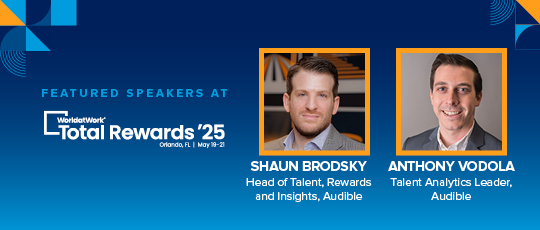Many of us have heard the saying that “hope is not a strategy.” We’ve heard it used in politics, sports, military and business. On the surface, this phrase appears to make good sense. After all, hope doesn’t define success parameters or outline the necessary tangible areas we gather before we launch a business or product.
And, in defense of who originally made this statement, it does sound better than “do your homework to avoid a mess later on.” Yet, I take issue to the notion that hope isn’t a strategy. After leading my organization through 2020, hope often was my only strategy.
While the author and origin of this quote are debated, it has been widely used to argue that hope is not the key to reaching our goals. Furthermore, the construct also insists that relying on hope as a strategy will lead to failure.
Strategy has never been all that precise. It is more art than science and contains a series of ideas, action items, communication and constant adaptation. When you think about what makes things work, it usually is because you assembled the right people who care enough about the right things that in the end produced the outcome you desired. To me, what guides that multistep process — from ideation to outcome — is quite clear: It’s hope.
Hope is tangible. Hope is a belief that you can make things happen. It is way more than just nice to have because it’s the one thing you’ll need when the overall strategy you intended needs to pivot.
“You may be wondering, “Is all hope created equal?” No, it isn’t. When you have hope based on experience, insight, collaboration and great data, its force is incredibly powerful. It’s more important than strategy. If you truly generate hope for what you’re doing, you’ve earned a lot of momentum and excitement to push forward.”
Hope can cover those moments when your people need to take the necessary steps to make things happen. And doing so requires trust. That is close to hope, but not the same thing. The hope portion is the overriding belief that helps make the push worth it. It ultimately encourages your team to stick with it, despite the challenges, and optimize the outcome. Without hope, you really don’t have all that powerful of a strategy.
You could argue that believing in the strategy is enough, that you may not need hope. Yet, you can believe something but not hope it happens. Hope can be a cohesive accelerator that overrides self-doubt and the consternation of the continuous process of adapting.
When teams fail, it likely has to do with a lack of hope. Hopelessness could cause us to give up before the full fight. When teams get stuck, hope shows us other ways and reasons to move forward. If we lack hope, we may be void of the deeper elements that it takes for success to occur.
You may be wondering, “Is all hope created equal?” No, it isn’t. When you have hope based on experience, insight, collaboration and great data, its force is incredibly powerful. It’s more important than strategy. If you truly generate hope for what you’re doing, you’ve earned a lot of momentum and excitement to push forward.
You know hope exists because you have placed your trust in a future state that you want to make happen — that you believe you can make happen. You are betting on the potential. When you need to adjust your strategy, hope helps you see more than the slate of facts; it helps you see what to do with them.
Dr. Valerie Maholmes, chief of the Pediatric Trauma and Critical Illness Branch at the Eunice Kennedy Shriver National Institute of Child Health and Human Development (NICHD), found that children who started their lives in poverty and managed to have success later in life all had hope as a common trait. Dr. Maholmes also found that to get where you hope to go means you have significant planning, motivation and determination. These skills are very helpful to getting things done, including carrying out strategy.
If 2020 taught us anything, it is that hope and resilience are necessary elements to bounce back from a crisis or create momentum or alignment when things inevitably do not go as planned. The COVID-19 pandemic affected every single company and person in one way or another. What I witnessed time and time again was that hope in its most simplistic, yet powerful form kept us going.
Developments in vaccines and the phased deployment around the world is giving us hope that we will return to some sort of normality. We continue to see reports of record high infections and new strains of the virus have been
identified. And despite the ongoing challenges, we are all looking forward to this year, planning for the unknown, setting up goals and creating strategies for recovery and growth. We are using hope to push forward.
Hope in the New Work Exchange
The New Work Exchange is powered by hope all around. 2020 redefined how and where we work and the ways we go about accomplishing tasks. What also emerged was an increased focus on the importance of people and their fundamental well-being.
Last month, when discussing the New Work Exchange, I shared that one of the two important shifts that fueled these changes were that in times of crisis and loss, people want to know they matter. It is the hope that we infuse in our collective good that influences how people react to the uncertain and unknown.
The intensity of last year’s events snowballed into a multi- faceted crisis and placed an increased pressure on leaders and organizations to put people first. The most successful business continuity strategies focused on taking care of one another — employees, customers and communities.
Workers around the globe were silently turning to leaders for care and understanding of their fears and anxiety about their health, families and jobs.
As the pandemic developed and worsened, they also turned for understanding of their grief. It was a great time to use hope as a strategy. It was likely the only thing that balanced out the horrendous continuum of bad news. Hope allowed people to reset, refocus and hang on. The notion that we all were — and continue to be — in this together provided enough hope that things will get better.
“Hope is a powerful driver of outcomes and can transport people from a current state to a better future state. Bringing purpose and mission together, hope allows people to peer into a future state that just might make the difference in how well they withstand the challenges.”
Hope is a powerful driver of outcomes and can trans- port people from a current state to a better future state. Bringing purpose and mission together, hope allows people to peer into a future state that just might make the difference in how well they withstand the challenges.
Without hope, we default to a lesser sense of optimism and trust. Alas, this never positions our minds or our teams for the collective good. So yes, hope is indeed a great strategy; you just need to earn it first.
When we launched the campaign #KeepTheWorldatWork in April of 2020, we had hope that we could impact the lives of millions by building the case for why it was so important for organizations to shift toward more stake- holder-driven capitalism that in the longer term would yield better returns for their business.
Keeping the world at work required a plan, but we relied on hope as the overall strategy because without that added element, decisions being made would have been short-term and void of the larger good we were seeking.
Hope shouldn’t be the only strategy. But we shouldn’t shy away from using it to drive our businesses forward. In uncertain times, with more likely to come, it’s time to redefine our usage and integration of hope in business. No doubt that innovation and creativity are sensational things, but absent hope, they won’t get you very far.




